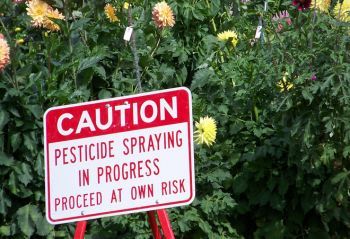
Publisher:
Bonnie King
CONTACT:
Newsroom@Salem-news.com
Advertising:
Adsales@Salem-news.com

~Truth~
~Justice~
~Peace~
TJP
Dec-09-2013 15:27

 TweetFollow @OregonNews
TweetFollow @OregonNews
Report: Rural Children Exposed to Pesticides Demonstrate Significant DNA Damage
Piotr Holownia European Public Health Assoc.Assessing DNA damage in children environmentally exposed to pesticides through using the comet assay and the micronucleus test
 wired.com |
(LONDON) - This overview and attached report are published by Oxford University Press on behalf of the European Public Health Association.
Background
Environment pesticide effects principally depend on their niche distribution and chemical stability/decomposition, according to seasonal variations. In areas of intensive pesticide use, populations are therefore more vulnerable to any detrimental effects, eg increased hypersensitivity, and may become conditioned to their short/long term actions depending on the patterns of use. Of particular concern are developmental disorders arising in children whenever the exposure is constant and of sufficient duration, even at low pesticide concentrations.
Methods
A study investigated whether cytogenetic damage increased through prolonged pesticide exposure in n = 117 children, aged 7-11 years, living in rural areas of intensive agriculture; controls being n = 87 children from an agri-tourism region without pesticide exposure. DNA Single-Strand Breaks (SSB) were detected by the Comet assay in whole fresh blood samples together with ‘formamidopyrimidine DNA-glycosylase (FPG)-sensitive sites' with the bacterial FPG protein in isolated lymphocytes. Micronuclei (MN) levels were measured by the cytokinesis-block MN assay. Acetylcholinoesterase (AChE) and Pseudocholinesterase (PChE) activities were used as biomarkers of exposure.
Results
Subjects exposed to pesticides had significantly higher AChE and PChE activities than controls, although average levels were well below the biological exposure limit. In addition, those exposed to pesticides had significantly higher levels of steady-state FPG sites and SSB levels (p < 0.001), as well as MN levels. A positive correlation was found between PChE activity and FPG-sensitive sites and also between MN levels and FPG-sensitive sites, (both p < 0.01).
Conclusions
In conclusion, despite the relatively low pesticide exposures in the test group of children, significant biological/developmental effects were detected.
Key message
-
Children from rural areas exposed to pesticides demonstrated significant DNA damage as determined by various standard biochemical tests.
- © The Author 2013. Published by Oxford University Press on behalf of the European Public Health Association. All rights reserved.
- Extract Free
- » Full Text (HTML) Free
- Full Text (PDF) Free


 _________________________________________
_________________________________________
Articles for December 8, 2013 | Articles for December 9, 2013 | Articles for December 10, 2013

googlec507860f6901db00.html
Quick Links
DINING
Willamette UniversityGoudy Commons Cafe
Dine on the Queen
Willamette Queen Sternwheeler
MUST SEE SALEM
Oregon Capitol ToursCapitol History Gateway
Willamette River Ride
Willamette Queen Sternwheeler
Historic Home Tours:
Deepwood Museum
The Bush House
Gaiety Hollow Garden
AUCTIONS - APPRAISALS
Auction Masters & AppraisalsCONSTRUCTION SERVICES
Roofing and ContractingSheridan, Ore.
ONLINE SHOPPING
Special Occasion DressesAdvertise with Salem-News
Contact:AdSales@Salem-News.com



Terms of Service | Privacy Policy
All comments and messages are approved by people and self promotional links or unacceptable comments are denied.
[Return to Top]
©2025 Salem-News.com. All opinions expressed in this article are those of the author and do not necessarily reflect those of Salem-News.com.